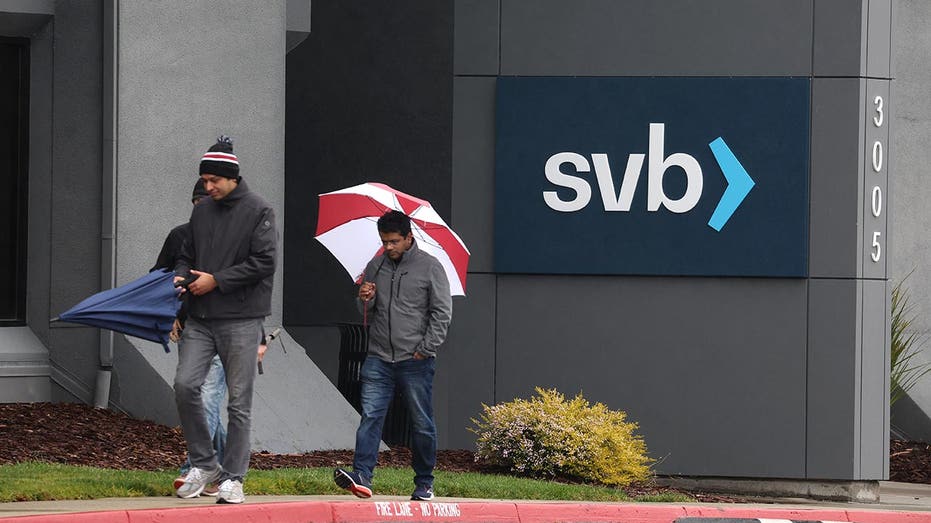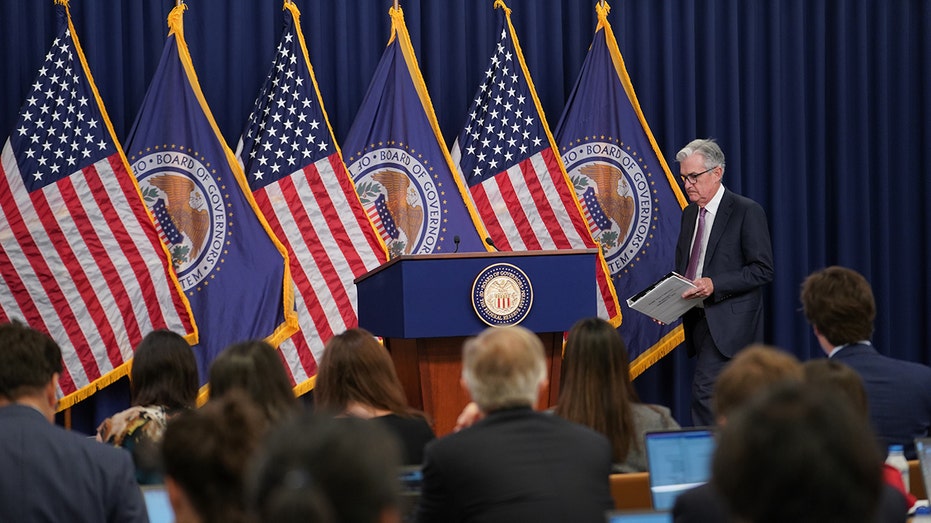Circle Squared Alternative Investments founder Jeff Sica shares concerns about the banking sector on ‘Varney & Co.’
In March, a growing number of small businesses reported facing challenges in obtaining loans or credit lines due to tightened lending standards following several bank failures.
According to a survey conducted by the National Federation of Independent Businesses (NFIB), a Tennessee-based association of small business owners, a net 9% of small business owners reported that their most recent loan was harder to obtain compared to the previous three months, the highest since December 2012.
Additionally, another 9% of small business owners expect credit to become even more difficult to obtain in the coming months.
Concerns about the impact of the banking crisis on small businesses

Employees walk in front of a sign outside of the shuttered Silicon Valley Bank (SVB) headquarters in Santa Clara, California. (Justin Sullivan/Getty Images / Getty Images)
“Small-business owners are skeptical about future economic conditions,” commented Bill Dunkelberg, NFIB chief economist. “There are significant uncertainties ahead, with the immediate concern being the possibility of a banking crisis.”
Last month, the Federal Reserve and Wall Street economists began warning that lending standards may become even more restrictive due to ongoing turmoil in the financial system resulting from the collapse of Silicon Valley Bank and Signature Bank.
During a credit crunch, banks usually tighten their lending standards, making it more challenging for businesses or households to obtain loans. Borrowers may be required to agree to stricter terms, such as higher interest rates, as banks aim to mitigate their own financial risk.
Small businesses, especially those relying on regional banks, are particularly vulnerable to tighter credit conditions. Regional banks, community banks, and credit unions tend to serve as the primary business customers for businesses with fewer than 99 employees.
Jamie Dimon warns of increased recession risks due to banking crisis
Lending standards were already being tightened by banks before the current crisis in the industry emerged. A quarterly survey of loan officers published by the Federal Reserve showed that an increasing number of banks tightened lending standards and experienced reduced demand in the final three months of 2022.

Fed Chairman Jerome Powell arrives to speak during a news conference following a Federal Open Market Committee (FOMC) meeting in Washington, D.C., on Sept. 21, 2022. (Photographer: Sarah Silbiger/Bloomberg via Getty Images / Getty Images)
This is due to the Federal Reserve’s current aggressive tightening campaign, which aims to control inflation that remains about three times higher than the pre-pandemic average.
According to the survey, around 26% of small business owners who recently took out a loan reported paying a higher interest rate, the largest share since 2006.
The survey states, “Interest rates are rising, but credit is still available.”
Read more on Fox Business:
Despite the tightening credit conditions, owners stated that their biggest concern remains inflation, followed by labor quality.
In March, the NFIB’s Small Business Optimism Index dropped 0.8 points to 90.1, marking the 15th consecutive month that it has remained below 98.









![YGOrganization | Develop into A Adorable Lady With “Taotao the Chanter”! [DOOD] YGOrganization | Develop into A Adorable Lady With “Taotao the Chanter”! [DOOD]](https://cdn.ygorganization.com/2025/07/eVPJQm3H-DOOD4.png)




